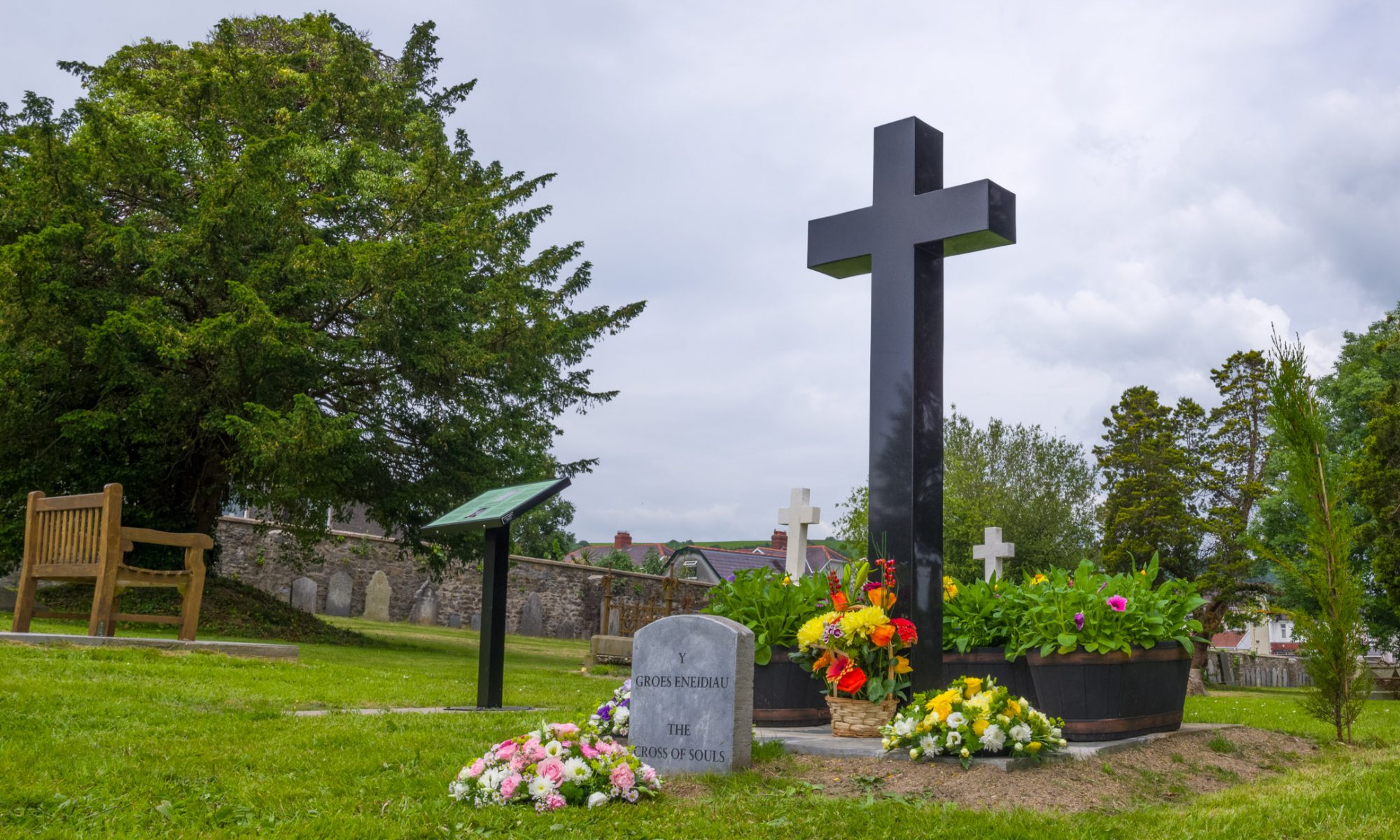Early this summer whilst carrying out some grass cutting at the cemetery, a small piece of stone emerged from the earth, believed to be another “bit of old discarded stone” an attempt was made to remove it but it was soon apparent that this was no ordinary stone but the corner of what was to turn out to be an unknown grave of one of the most romantic families in Wales.
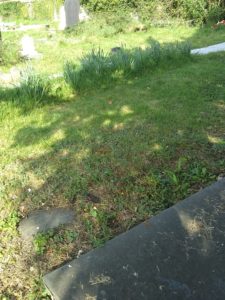
Further careful “digging” revealed the true extent of the grave and the wonderfully preserved inscription. The survey of graves taken in 1977 has no mention of it due to the fact that it lay buried under the soil until now. Here then is a brief story of a truly remarkable family. Wythen Evans was originally from Dolau, Machynlleth. On 9th June 1793 he married at Llandovery Anne Howe Gwynne, a daughter of Sackville Gwynne of Glanbran and settled with her at the Glanbran town house in Llandovery, Sackville Place, just below Llanfair ar y bryn church, where they were married.
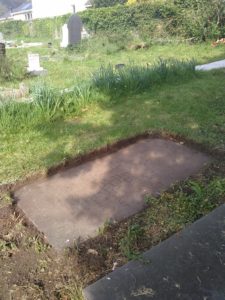
(This house was later called St Mary’s Cottage and then Llanfair Grange and became a hotel in the mid C20th and is now a nursing home, much altered and rebuilt of course). Wythen Evans died on 24th August 1819 aged 59 and was buried in Tirabad church, near Glanbran, but just over the border in Breconshire. This had been built by Anne’s great great uncle in 1716, because Glanbran was miles from Llandovery and Cynghordy church (which would have been much nearer) was not built until the late C19th. Many of the C18th Gwynne’s are buried there. Anne’s father was the famous gentleman harpist Sackville Gwynne. He was noted as a lover of the harp. Edward Jones (Bardd y Brenin) affirms that Sackville Gwynne was one of the finest players of his day upon the triple harp. He was also patron of harpists. JOHN WOOD JONES (1800 – 1844), said by some to have been born on the roadside near Barmouth; was christened at Llanfihangel-y-Traethau, on 6 April 1800. He was taught to play the harp by his father and by Richard Roberts of Caernarvon (1769 – 1855), and became one of the most celebrated harpists of his time and, indeed, of the country; he was generally known as ‘John Jones.’ He was at one time family harpist to the Gwynne’s of Glanbrân, near Llandovery and then kept a school for harpists under the patronage of Carnhuanawc ** at Carmarthen, and finally became harpist to the Llanover family; he died at Llanover, 12th December 1844; Anne’s father died 1794 and in fact he and Anne’s mother, who had died before him, are buried at Llanfair-ar-y-bryn. Glanbran was a famously beautiful mansion, abandoned in the early C20th and now entirely disappeared. When Wythen Evans died, he was given a big obituary in The Cambrian and the Carmarthen Journal, both on 27th August (so very fast work writing it and sending it in!). It emphasises what a lovely chap he was, a regular Churchgoer, with a wide circle of friends and “As a husband and parent, he was ever affectionate, tender and indulgent”.
So it was obviously a very happy marriage. The discovery of Anne’s grave and that of her children links in to one of the most romantic of Carmarthenshire’s old families.
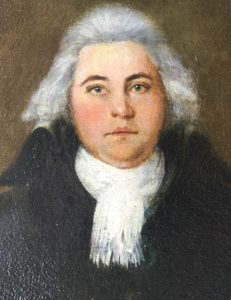
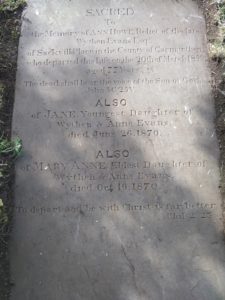
** Thomas Price (Carnhuanawc) was an ardent advocate of the cause of the native language and culture of Wales. About 1820 he founded, at his own expense, a Welsh school at Gelli Felen, while in 1833 he was agitating in the press for the use of Welsh in Sunday and day schools. As rural dean he insisted that the clergy under his jurisdiction should instruct their Welsh parishioners in their native tongue. In 1844 he wrote a series of scathing but unsigned letters to the press condemning the way in which church services were conducted in English for the convenience of a few rich people, and bishoprics and livings conferred on men whose ignorance of Welsh should have disqualified them from holding benefices in Wales. Throughout his life he took an intense interest in everything concerning the triple harp.

And finally what of the “Royal Connection” well Eleanor Gwynne, more commonly known as Nell Gwynne, was a prolific celebrity figure of the Restoration period. Praised by Samuel Pepys for her comic performances as one of the first actresses on the English stage, she became best known for being a long-time mistress of King Charles II. Called “pretty, witty Nell” by Pepys, she has been regarded as a living embodiment of the spirit of Restoration England and has come to be considered a folk heroine, with a story echoing the rags-to-royalty tale of Cinderella. Eleanor Gwynne is reputed to have descended from this Welsh branch of the family and had two sons by King Charles : Charles Beauclerk and James Beauclerk. Charles was created Earl of Burford and later Duke of St. Albans.

